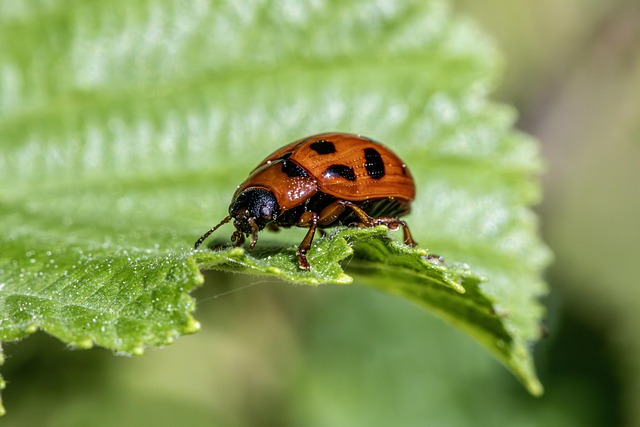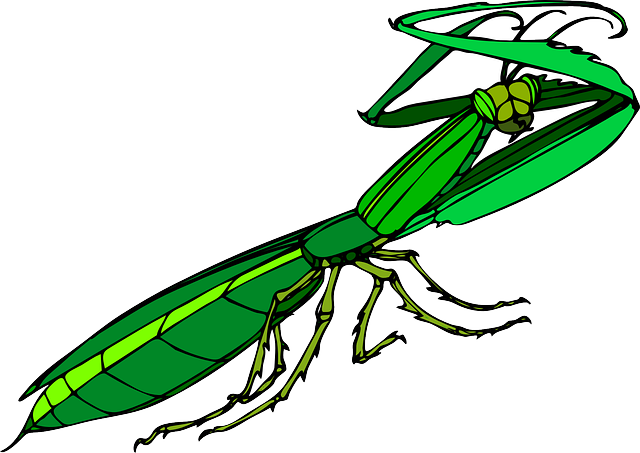A persistent musty smell in your Wheat Ridge basement may indicate a hidden pest problem caused by moisture and decay. To address this, locate the source, which could be corners, joints, or areas near pipes. Rule out common sources like damp carpeting or moldy drywall. Inspect for water leaks, poor ventilation, and pest activity. Take action based on findings: seal entry points, set traps/baits, use natural repellents, and consider professional pest control services.
Are you tired of that persistent musty odor in your Wheat Ridge basement? It could be a sign of an unwanted guest—pests! Learn how to identify common basement pests and discover the root cause behind the smell. This step-by-step guide equips you to effectively locate and suppress pests, ensuring a fresh and pest-free environment. Explore powerful yet safe control strategies tailored for your Wheat Ridge basement, reclaiming comfort and peace of mind.
- Understanding Musty Smells and Common Basement Pests
- Locating the Source: A Step-by-Step Guide
- Effective Pest Control Strategies for Your Wheat Ridge Basement
Understanding Musty Smells and Common Basement Pests

A peculiar, musty smell lingering in your Wheat Ridge basement could be a red flag indicating an unseen pest problem. This off-putting odor often stems from moisture and decay, especially if your basement has poor ventilation or leaks. Common pests like powder post beetles, carpenter ants, and termites can cause structural damage and contribute to musty smells by feeding on wood materials and creating tunnels.
Identifying the source of this smell is crucial for effective Wheat Ridge pest control. Inspect areas prone to moisture buildup, such as corners, joints in concrete floors, or near pipes. Look for signs of pests, like tiny holes in wooden beams or ant trails. If you suspect a pest infestation, contacting a professional pest control service is recommended for proper identification and treatment.
Locating the Source: A Step-by-Step Guide

To effectively address a musty smell in your Wheat Ridge basement, the first step is to pinpoint its origin—a process known as source location. Here’s a step-by-step guide tailored for your basement:
1. Identify the Musty Smell: Start by acclimating yourself to the scent and understanding its intensity throughout different areas of your basement. Note if it’s confined to one corner or spreads across the entire space.
2. Eliminate Common Sources: Begin with a systematic check for common sources of musty odors, such as damp carpeting, moldy drywall, water-sodden wood, or even an old, neglected trash can. Address these issues immediately to rule them out as potential culprits.
3. Check for Water Leaks: Inspect your basement for any signs of water intrusion from pipes, windows, doors, or the foundation itself. Moisture is a fertile ground for mold growth and often contributes to that distinct musty smell. Repair any leaks promptly.
4. Investigate Ventilation: Evaluate if proper ventilation exists in your basement. Inadequate airflow can trap moisture and encourage pest activity. Ensure vents are functional and unblocked, promoting air circulation throughout the space.
5. Trails of Pest Activity: Pests often leave telltale signs—droppings, chewed materials, or a trail of activity. Look for these clues as they can lead you directly to the source of the musty smell and indicate the type of pest infesting your basement.
Effective Pest Control Strategies for Your Wheat Ridge Basement

If you’re noticing a musty smell in your Wheat Ridge basement, it could be an indication of a pest infestation. Effective pest control starts with identifying the source. Check for any signs of moisture or water damage, as many pests are drawn to these environments. Look for tiny holes in fabrics or packaging, small piles of feces, or even live insects. These can provide clues about the type of pest infesting your space.
Once you’ve located the source, it’s time to take action. For basement pest control, a multi-pronged approach is often most effective. This might include sealing entry points to prevent further infestation, using specialized pest traps or baits, and employing natural repellents like cedar oil or mint leaves. Professional pest control services can also provide valuable expertise and tailored solutions for effectively ridding your Wheat Ridge basement of any unwelcome visitors.
Identifying and addressing the root cause of a musty smell in your Wheat Ridge basement is crucial for effective pest control. By following the step-by-step guide provided, you can locate the source and implement appropriate strategies to suppress pests. Remember, early detection and targeted treatment are key to maintaining a clean and healthy living environment, eliminating unwanted critters, and preventing future infestations.
